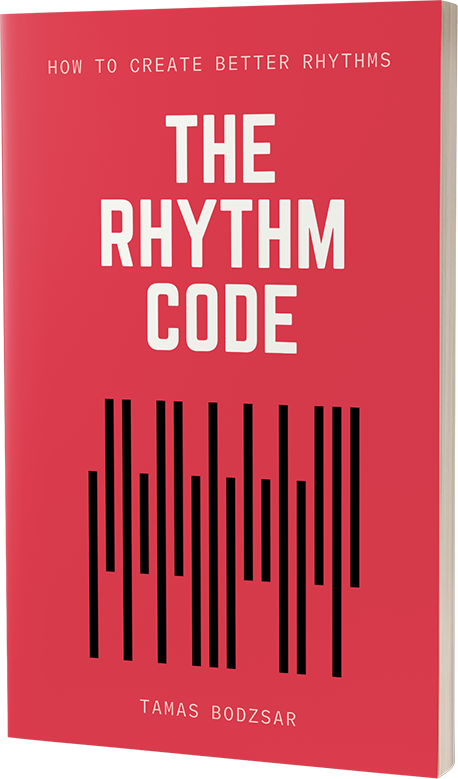
I just got an email from someone the other day, and he asked me “how do I write a happy song?”. I would like to answer this question here so everyone can learn from it.
I was looking for “happy” songs in order to find the answer to this question. Obviously, there are many songs that have a positive message, but I wanted to find the answer to the question “what makes a happy song happy?”. So I tried to choose songs that are mostly “happy” all the way.
Tempo
If you ask any musician about how to write a happy song, everyone will say something like “you need to use major chords, because major chords evoke happiness, and minor chords evoke sadness”.
Now listen to the song “Photograph” by Ed Sheeran:
Is this a happy song? I don’t think so. Although the song has a positive vibe, I wouldn’t consider it a typical happy song.
Here is the chord progression of the song:
E – C#m – B – A
It’s full of major chords, in fact, most of the chords are major chords. So why isn’t this song a happy song?
It’s because it has a very low energy level. Why? Because of the tempo. The slow tempo puts this song on a very low energy level. On the other hand, a faster tempo puts a song on a higher energy level.
So a happy song needs to be fast in tempo, and it’s more important than the chord progression!
Chords
A major chord evokes happiness, and a minor chord evokes sadness. So you just need to use major chords if you want to write a happy song. This is simple.
OR IS IT?
Listen to the verse of “Perfect Day” by Lou Reed:
This is obviously a very depressive song, especially the verse. Here is the chord progression of the verse:
Bbm – Eb – Ab – Db – Gb – Ebm – F
71% of the chords are major chords, but it’s still a very depressive song.
Now listen to “Happy” from Pharrell Williams:
Listen to the chord progression of the chorus:
Dbmaj7 – Cm7 – Cm7 – F7
50% of the chords are minor chords! So how come it’s a happy song? (No, it’s not because of the title.)
Let’s go back to the previous song, “Perfect Day”. Here is the chord progression of the CHORUS:
Bb – Eb – Dm – Eb – Bb – F – Gm – F – Eb
Did you notice that the chorus of this song has a more positive vibe compared to the verse? The reason is that the chord progression STARTS with a major chord! And the same applies to the song “Happy”, even though 50% of the chords are minor chords, the chord progression of the chorus STARTS with a major chord!
Here is another song I consider a “happy” song. The song “I’m Yours” by Jason Mraz. Listen to the song:
The chord progression of this song is:
B – F# – G#m – E
There are literally hundreds of songs that are using these four chords but in a different order. But this song STARTS with a major chord. Do you see the pattern here?
The point is: yes, major chords will evoke happiness, but it doesn’t mean that you can ONLY use major chords. You can use minor chords in a happy song, but it’s important to START the chord progression with a major chord.
Rhythm
Have you ever seen a sad man dancing? Probably not. People only dance when they are happy. We associate dancing with happiness… and dancing makes us happy.
Just think about Cuban salsa music. You cannot think about this music without thinking about dancing! And Cuban salsa is pure happiness.
So what is it that danceable songs have in common? It’s good rhythm.
In fact, the song “Happy” (Pharrell Williams) is using the same rhythm system as Cuban salsa. You might think that it’s weird because they are completely different genres. But this rhythm system is not very obvious. Because it’s a hidden system called the Rhythm Code.
So if you want to make a happy song, you need to create a song with a good, somewhat danceable rhythm.
Fortunately, we have a “hack” for that, because the Rhythm Code tells you exactly how to do that. The Rhythm Code is the first chapter of the Songwriting Essentials online course.
Lyrics
Obviously, if we want to write a happy song, the topic of the lyrics needs to be something positive. In fact, you can literally write a song about anything that is positive in your life AND probably other people can relate to it.
But I wanted to give you more specifics here, so I made a list of “happy” songs, and analyzed the lyrics in order to find some examples for topics. Here are some of the examples:
I’m happy because I know that I’m loved
One of the happiest moments in our life is when we KNOW that someone loves us, right? Everyone can relate to that.
Example lyrics: “I used to think maybe you loved me now, baby, I’m sure” – Katrina & The Waves – Walking On Sunshine
Another example: “it’s our God-forsaken right to be loved” – Jason Mraz – I’m Yours
Just Dance
You see? I told you! You only dance when you are happy. And dancing makes you happy. This is also something that most people can relate to.
Example lyrics: “just dance, dance, dance” AND “I need no reason” – Justin Timberlake – Can’t Stop The Feeling
I don’t care what everyone says
We don’t want to stress over things, like what others are saying about us, we just want to be happy. Every single one of us.
Example lyrics: “Haters gonna hate, hate, hate… but I’m just gonna shake, shake, shake… shake it off.” – Taylor Swift – Shake It Off
By the way, Swift uses the Rhythm Code in this song! I make a more detailed analysis of this song in the Songwriting Essentials course.
No Stress
Everyone loves those days when we don’t need to work, we don’t need to stress about anything. Just chilling at home, watching Netflix, and being lazy.
Example lyrics: “Today I don’t feel like doing anything” – Bruno Mars – Lazy Song
Or another example if we say: we shouldn’t worry about the past, and we should only think about the future.
Example lyrics: “Come now, set the past on fire” AND “Say “Bye” to the past, “Hello” to tomorrow” – Sia – Together
Pro-Level Tip
Take your song to the next level by making the mood of your music a little bit more sophisticated. A song can be more than just pure happiness. In fact, successful songwriters always mix the different feelings in a song.
Consider making a “happy” chorus, but making other parts of the song “less happy”. You can achieve this in several different ways.
For example, you can start the chord progression of the verse with a minor chord, but start the chorus with a major chord – which will make the chorus “happy”. This way your chorus will have a much bigger impact by the way!
In Summary
So here is how you can write a happy song:
1. The song needs to be an uptempo song because a faster tempo means a higher energy level.
2. You can use minor chords in the chord progression, but ALWAYS start with a major chord!
3. You need to create a good, danceable rhythm for happiness. You can use the Rhythm Code as a “hack” to make better rhythms for your music.
4. Search for “happy” songs, and write down topic ideas for the lyrics. But you can write about anything positive in your life.
5. Consider making your song more sophisticated by mixing the different moods in the song.
The secret pattern behind successful songs
Get the eBook for $4.99

